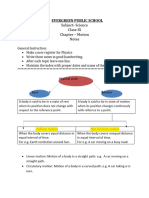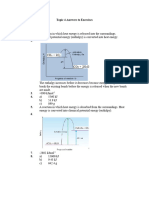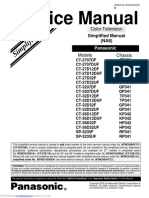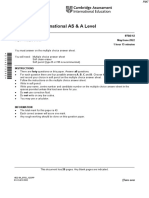0% found this document useful (0 votes)
40 views4 pagesClass 9 Science Motion Styled Notes
The document covers the concept of motion, including its definition, types, key terms, and equations of motion. It differentiates between distance and displacement, as well as speed and velocity, and explains uniform circular motion. Additionally, it provides practice questions and answers related to the topic to reinforce understanding.
Uploaded by
bananalovesme906Copyright
© © All Rights Reserved
We take content rights seriously. If you suspect this is your content, claim it here.
Available Formats
Download as PDF, TXT or read online on Scribd
0% found this document useful (0 votes)
40 views4 pagesClass 9 Science Motion Styled Notes
The document covers the concept of motion, including its definition, types, key terms, and equations of motion. It differentiates between distance and displacement, as well as speed and velocity, and explains uniform circular motion. Additionally, it provides practice questions and answers related to the topic to reinforce understanding.
Uploaded by
bananalovesme906Copyright
© © All Rights Reserved
We take content rights seriously. If you suspect this is your content, claim it here.
Available Formats
Download as PDF, TXT or read online on Scribd
/ 4






























































































